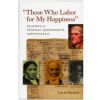Textile Workshop
In September 1811, Thomas Jefferson hired William McClure to expand and mechanize clothmaking at Monticello. In the next two years, McClure built spinning and weaving equipment and trained Jefferson's enslaved workforce in their use. Labor in the new "factory," located across the Rivanna River from Monticello at Lego farm, began in 1812 with the installation of a twelve-spindle spinning machine Jefferson purchased from Oliver Barrett of Troy, New York. Jefferson wrote he "thought it a duty to my neighbors to take on myself the risk of disappointment" in finding a device suitable for plantation manufacture.[1]
After numerous experiments, Jefferson eventually settled on the spinning jenny patented by James Hargreaves in 1770. He instructed McClure to build jennies of twenty-four spindles each along with two looms fitted with James Kay's 1733 invention, a fly shuttle. A hand-operated machine for carding cotton was soon added, despite the presence of a water-operated woolcarding mill nearby.
Videos about the Textile Workshop

The Technology of the Textile Workshop

Operation of the Spinning Jenny

Restoration of the Textile Workshop
Jefferson's annual goal was 1,200 yards of cloth woven from purchased cotton and from wool and hemp produced on his farms. He never sought to make fine cloth; his ambition was coarse cloth for summer and winter allotments for the 130 enslaved people on the Monticello plantation.
After William McClure's departure in 1814, the clothmaking equipment was moved to the Monticello mountaintop where a team of enslaved women and children labored in the "small spinning and weaving establishment." Dolly and Mary were the weavers, several other women and young girls were spinners, and young boys did the carding. As Jefferson wrote, "[We are] able to clothe our own people by the labor of a few of the least useful of them."[2] The daily tasks of Monticello's enslaved textile workers varied with the season and the tools they used. Charts in Jefferson's farm book show a spinner's task varying from six ounces of cotton in a nine-hour day in January to nine and one-third ounces in a fourteen-hour day in June.[3] After the introduction of spinning jennies, the task increased to two ounces per spindle.
- Monticello Research Department, 5/90
PRIMARY SOURCE REFERENCES
1812. "my houshold manufactures are just getting into operation on the scale of a Carding machine . . . which may be worked by a girle of 12. years old, a Spinning machine . . . carrying 6. spindles for wool, to be worked by a girl also, another . . . carrying 12. spindles for cotton, & a loom, with a flying shuttle, weaving it’s 20. yards a day."[4]
1812. " . . . it happens that the person who has charge of my small spinning and weaving establishment is absent also, so that I cannot consult him on the particular kind of hand-carding machine which will suit us. the establishment is small, being merely for houshold use."[5]
1813. "Maria is becoming a capital spinner. she does her ounce & a half a day per spindle on a 12. spindle machine & will soon get to 2. ounces which is a reasonable task."[6]
1813. "we have in our family (including my daughter’s) three spinning Jennies agoing, of 24. & 40. spindles each which can spin 11. pounds of coarse cotton a day, and our looms fixed with flying shuttles, which altho' they do not perform the miracles ascribed to them, do, I think, double the effect of the common loom."[7]
1815. "I make in my family 2000. yds of cloth a year, which I formerly bought from England, and it only employs a few women, children & invalids who could do little in the farm."[8]
 Explore: Slavery at Monticello Mobile Guide
Explore: Slavery at Monticello Mobile Guide

Available in Our Online Shop: "Those Who Labor for My Happiness"
References
- ^ Jefferson to Robert R. Livingston, April 20, 1812, in PTJ:RS, 4:637. Transcription available at Founders Online.
- ^ Recommendation of William McClure, March 12, 1814, in PTJ:RS, 7:240. Transcription available at Founders Online.
- ^ Farm Book, 1774-1824, page 116, by Thomas Jefferson [electronic edition], Thomas Jefferson Papers: An Electronic Archive, Massachusetts Historical Society, 2003. Original manuscript from the Coolidge Collection of Thomas Jefferson Manuscripts, Massachusetts Historical Society.
- ^ Jefferson to Thaddeus Kosciuszko, June 28, 1812, in PTJ:RS, 5:187.Transcription available at Founders Online.
- ^ Jefferson to Alrichs & Dixon, August 30, 1812, in PTJ:RS, 5:335. Transcription available at Founders Online.
- ^ Jefferson to Jeremiah A. Goodman, March 5, 1813, in PTJ:RS, 5:663. Transcription available at Founders Online.
- ^ Jefferson to Richard Fitzhugh, May 27, 1813, in PTJ:RS, 6:140. Transcription available at Founders Online.
- ^ Jefferson to James Maury, June 16, 1815 in PTJ:RS, 8:544. Transcription available at Founders Online.
